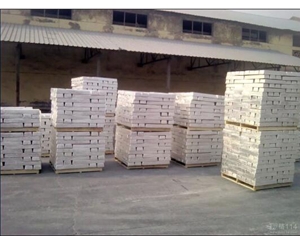Magnesium alloy is an alloy based on magnesium with added other elements. Its characteristics include low density (approximately 1.8g/cm³ for magnesium alloy), high strength, large elastic modulus, good heat dissipation, good shock absorption, greater capacity to withstand impact loads than aluminum alloy, and good corrosion resistance to organic substances and alkalis.
The main alloying elements are aluminum, zinc, manganese, cerium, thorium, and small amounts of zirconium or cadmium. Currently, magnesium-aluminum alloy is widely used, followed by magnesium manganese alloy and magnesium-zinc zirconium alloy.
It is mainly used in industrial sectors such as aviation, aerospace, transportation, chemical, and rockets. Magnesium is one of the lightest metals among practical metals, with a specific gravity of approximately two-thirds that of aluminum and one-fourth that of iron. It is also one of the strongest and most rigid practical metals. We provide magnesium alloy for sale.

Magnesium Alloy Waste
Compared with alloys, magnesium alloys have an absolute advantage in heat dissipation. For radiators made of magnesium alloy and aluminum alloy with the same volume and shape, the heat (temperature) generated by a certain heat source is more easily transmitted from the bottom to the top of the magnesium alloy radiator than the aluminum alloy radiator, and the top is more easily heated. Generally, we calculate magnesium alloy price per pound.
That is, the temperature difference between the root and the top of the aluminum alloy radiator is smaller than that of the magnesium alloy radiator. This means that the temperature difference between the air temperature at the root of the fins made of magnesium alloy and the air temperature at the top of the fins is greater than that of the fins made of aluminum alloy.
Therefore, it accelerates the diffusion and convection of air inside the radiator, improving the heat dissipation efficiency. Therefore, at the same temperature, the heat dissipation time of magnesium alloy is less than half of that of aluminum alloy.
Aluminum alloy is a widely used non-ferrous structural material in industry and has been widely used in aerospace, automotive, mechanical manufacturing, shipbuilding, and chemical industries.
With the rapid development of the industrial economy, the demand for aluminum alloy welded structural components is increasing, and the research on aluminum alloy weldability is also continuously deepening. Aluminum alloy is currently the most widely used alloy. As a magnesium aluminum alloy die casting supplier, we pay attention to the development of it.
Aluminum alloys have low density but high strength, approaching or exceeding high-quality steel, have good plasticity, can be processed into various profiles, and have excellent electrical conductivity, thermal conductivity, and corrosion resistance. They are widely used in industry, with consumption second only to steel.
Some aluminum alloys can be heat-treated to obtain good mechanical properties, physical properties, and corrosion resistance. Hard aluminum alloys belong to the AI-Cu-Mg system and generally contain a small amount of Mn, which can be strengthened by heat treatment. Their characteristics are high hardness but poor plasticity.
Super-hard aluminum belongs to the Al-Cu-Mg-Zn system and can be strengthened by heat treatment. It is an aluminum alloy with high strength at room temperature but poor corrosion resistance and quick softening at high temperatures.
Deformation aluminum alloy is mainly aluminum-zinc-magnesium-silicon alloy. Although there are many types of added elements, the content is very small, so it has excellent thermoplasticity and is suitable for forging, so it is also called forging aluminum alloy.
The differences between them are as follows:
The tensile strength is different. The strength of a frame made of the same volume of magnesium alloy is not as good as that of an aluminum alloy. In order to achieve the strength of the frame, the material thickness and tube length must be increased, so magnesium alloy has no advantage over aluminum alloy in weight.
The fatigue strength is different. The durability of a magnesium alloy frame of the same volume is worse than that of an aluminum alloy frame. This is also the fatal flaw of magnesium alloy.
The more times you ride, the higher the stress, and the lower the strength, even the frame life is less than 2-3 years. Therefore, professional riders rarely use magnesium alloy frames. If used in competitions, the mileage is also calculated, and the bike is replaced as a waste, recycled and reused as magnesium alloy waste.
The oxidation of the metal is different. The periodic table of elements clearly shows that magnesium alloys are more susceptible to oxidation and corrosion than aluminum alloys.
The manufacturing cost is different. Magnesium alloy is an active metal, so the manufacturing equipment and environmental requirements are higher, resulting in higher manufacturing costs. The cost-effectiveness of bicycles produced with magnesium alloy frames is far lower than that of aluminum alloy frames.
The specific gravity density is different. Under the same volume conditions, magnesium alloy is lighter than aluminum alloy, which is the advantage of magnesium alloy and also the reason why magnesium alloy waste is more expensive to recycle than aluminum alloy.